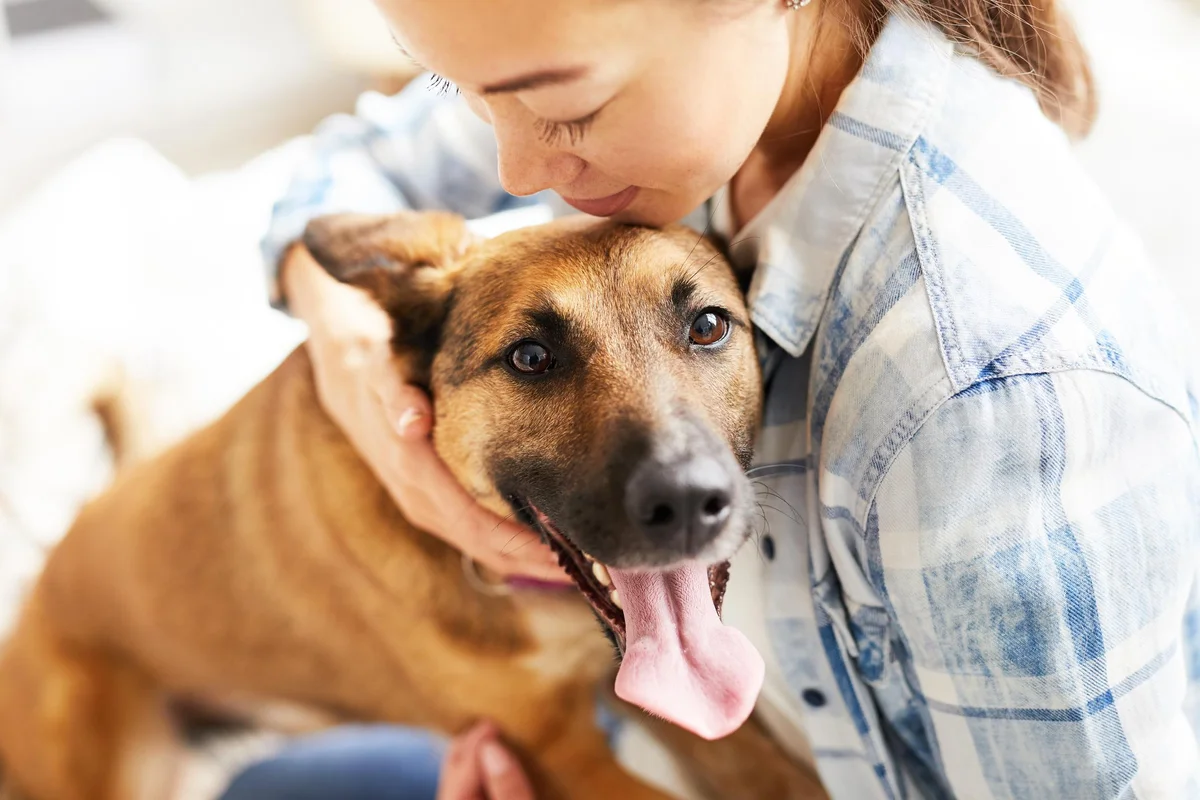Table of Contents
For millennia, humans and dogs have shared a bond. This relationship goes beyond mere companionship—it’s deeply therapeutic. Across the globe, therapy dogs provide vital assistance, aiding individuals grappling with various emotional, physical, and cognitive challenges. These furry companions offer solace in moments of distress, and light during times of sorrow, and serve vital roles in settings like hospitals, schools, and disaster areas. Let’s explore what makes a good therapy dog and how to select the perfect one. The teddy bear breeders are the ultimate choice.
Therapy Dogs

At the outset, it’s crucial to comprehend the role and nature of therapy dogs. Unlike service dogs, therapy dogs are trained primarily to offer comfort and affection to individuals in diverse environments such as hospitals, retirement homes, schools, and hospices. Their roles are manifold. Some therapy dogs assist children struggling with reading, some offer a shoulder to lean on for trauma survivors, and others bring joy to the elderly. It’s essential to understand the distinction between emotional support animals and certified therapy dogs, as therapy dogs usually undergo specialized training and certification.
Key Traits of an Ideal Therapy Dog
Therapy dogs come in various shapes and sizes, but certain qualities make them more fit for therapeutic roles. An ideal therapy dog exhibits a calm and gentle temperament. Dogs that are patient, adaptable, and inherently friendly tend to excel in therapeutic settings. Their ability to socialize, both with people and other animals, is a critical attribute. These dogs should not display signs of aggression or excessive fear. At the base level, they should possess sound obedience skills, responding promptly to fundamental commands such as ‘sit,’ ‘stay,’ and ‘come.’ Furthermore, maintaining their health is vital. They should undergo regular veterinary check-ups, ensuring they are free from contagious diseases and have their vaccinations updated.
Breeds: Does it Matter?

While it’s true that any dog with the right temperament and training can become a therapy dog, some breeds naturally fit the bill. Golden Retrievers, for instance, are often chosen for their universally gentle nature. Labrador Retrievers, with their gentle demeanor combined with intelligence, are also favorites. Then there are Poodles, whose hypoallergenic coats are a boon in environments where potential allergies could be an issue. However, one must understand that a breed only offers a guideline. The individual temperament and disposition of the dog often hold more weight than its lineage.
Training & Certification
Merely owning a lovable dog is the tip of the iceberg. Training and subsequent certification are what mold them for therapeutic roles. It all begins with foundational obedience training. Several renowned organizations offer specialized therapy dog training programs, enhancing the dogs’ innate abilities to comfort and empathize. Post-training, these dogs undergo rigorous evaluations, wherein their behavioral responses to diverse scenarios are assessed. Successful evaluations lead them, and often their handlers, to receive certification, stamping their credentials as therapy dogs.
Personalizing the Selection

When selecting a therapy dog, it’s paramount to match the dog’s attributes with the therapeutic context. If the primary beneficiaries are children, a dog known for its gentle interactions with young ones is preferable. For individuals recovering from trauma or battling PTSD, dogs with specialized trauma support training might be ideal. When selecting for the elderly, it would be wise to avoid breeds or individuals that are bursting with energy, as calmness may often be more therapeutic.
Commitment and Care
Upon selecting your ideal therapy dog, it’s pivotal to understand that their well-being is a shared responsibility. Regular health check-ups ensure the dog’s physical fitness. But just as they cater to others’ emotional needs, their emotional health cannot be sidelined. They require periods of rest, relaxation, and recreation. Continuous training sessions, meanwhile, ensure they stay sharp, maintaining and even honing their skills as therapy dogs.
FAQs
Can any dog become a therapy dog regardless of age?

Generally, both puppies and older dogs can be trained as therapy dogs. However, the dog’s temperament is the most critical factor. Puppies might have the advantage of being molded from a young age, but they also require more time to mature. Older dogs, if they exhibit the desired temperament and are in good health, can be just as effective and might even be quicker to train given their maturity.
How often should a therapy dog be recertified?
Recertification policies can vary between different certifying organizations. Typically, a therapy dog might need to be recertified annually to ensure they maintain the standards. It’s essential to check with the specific organization you’re associated with for their guidelines.
Are there any environments where therapy dogs should not be used?
While therapy dogs can be beneficial in many settings, there might be areas where their presence is not suitable, such as intensive care units in hospitals or locations where individuals have severe allergies. It’s always crucial to evaluate the specific environment and the needs and conditions of the individuals involved before introducing a therapy dog.
How do therapy dogs differ from psychiatric service dogs?

Therapy dogs provide comfort and emotional support to various people, often in group settings. They do not have specialized training to assist with one individual’s particular needs. On the other hand, psychiatric service dogs are trained to perform specific tasks to aid individuals with psychiatric disorders. These tasks might include calming someone with PTSD during an anxiety attack or reminding someone with depression to take their medication.
What is the average cost involved in training and certifying a therapy dog?
The cost can vary widely based on the region, training program, and the specific requirements for the dog. On average, training can range from a few hundred to a few thousand dollars. It’s advisable to research local programs and organizations to get a better estimate tailored to your area and needs.
Can therapy dogs also live as regular family pets?
Absolutely! Many therapy dogs live as beloved family pets when they’re not on duty. The training they receive often makes them well-behaved and adaptable, making them excellent companions at home. It’s essential, however, to ensure they get downtime and regular family bonding to maintain their emotional well-being.
Conclusion
The path to choosing the perfect therapy dog is as enriching as it is rewarding. These canine therapists touch lives in immeasurable ways, often leaving indelible marks on the hearts they comfort. By guaranteeing a rigorous selection process, apt training, and dedicated care, you’re not just acquiring a pet, but a partner in therapy. Always remember that beyond training, breed, or health, the real magic lies in the bond that forms between the dogs and those they serve. Embrace this journey wholeheartedly, and the therapeutic wonders of canine companionship will continually unfold before you.

